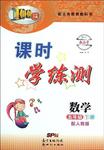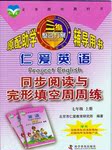阅读理解。
Yang Yang( A) Wins China' s First-ever Winter Olympic Gold
Five-time world overall short-track speed skating champion Yang Yang( A) won China' s first-ever Winter
Olympic gold medal with a runaway victory in the 500m final on Saturday.
Yang Yang, putting behind her a dismal fourth place finish in the 1,500 meters three days ago, got off to a
sparking lead and never looked back to cross the line in 44. 187 seconds. World-record holder and four-time
European champion Evgenia Radanova followed her 0.065 seconds behind.
Another Chinese, Wang Chunju, the world champion in the shortest distance came in third, two-hundredths
of second further behind.
Yang,25,whose name is tagged with the letter A to distinguish her from her younger teammate and
namesake, Yang Yang ( S),is the overall World Cup winner in this season, with the top points in the 1,000m
and 1,500m.
In the 1,500m, the younger Yang,24, who won two silver medals in Nagano four years ago, crashed out
while chasing hard after two South Korean teenagers, Ko Gi-Hyun and Choi Eun-Kyung, who eventually
finished first and second. Yang Yang( A) ended up fourth.
Yang Yang( S) did not compete in the 500 meters.
1. What day was the day when Yang Yang ( A) competed in the 1,500 meters?
A. Saturday.
B. Friday.
C. Thursday.
D. Wednesday.
2. How long did Evgenia Radanova take to finish the 500m final?
A. 44. 252 seconds.
B. 44. 187 seconds.
C. 44.122 seconds.
D. None of the above.
3. Why did not Yang Yang( S) compete in the 500 meters?
A. She did not want to.
B. She was wounded.
C. She was not qualified.
D. It was not mentioned.

 百年学典课时学练测系列答案
百年学典课时学练测系列答案 仁爱英语同步练习册系列答案
仁爱英语同步练习册系列答案